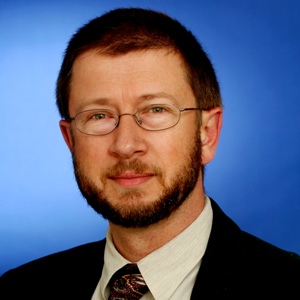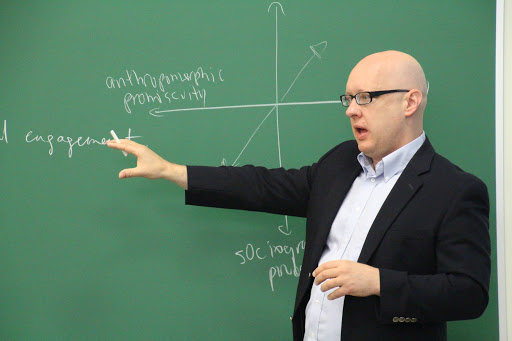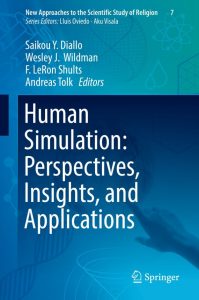Methods such as computational modeling and simulation are already integral to STEM fields – building bridges, visualizing disease processes, processing data. But these powerful tools are largely isolated from humanities disciplines; there is little overlap in terms of the people that understand and work within both perspectives. Nonetheless, simulation remains a valuable tool for humanities scholars and learners.
These disciplines may seem dissimilar at first, but we have found that putting them in conversation with one another yields insights that are very difficult – indeed, probably impossible – to produce in any other way.
Focus areas
Meet the team





Approach

CMAC’s work in the scientific study of religion through the Institute for the Bio-Cultural Study of Religion has long combined traditional scientific approaches with traditional humanities approaches. We have found that the only impediments to this union are related to ideological resistance and resentment across the science-humanities boundary – that is, the impediments are ideological, not intellectual – and that otherwise their combination makes great sense.
M&S has thus far shown itself to be an extremely useful aid to humanities approaches in the academic study of religion. These techniques sharpen the nuanced hermeneutical formulations of the humanities and the interpretive social sciences and expose theories generated within such fields to testing and improvement.
With that experience in mind, CMAC is striving to make M&S more widely available to scholars in humanities disciplines, from literature to history, and in interpretative social sciences, from psychology to sociology to anthropology. This effort involves training humanities graduate students and working with humanities scholars to develop computer simulations that express their theories. Each time we have engaged a humanities scholar in this way, the results have been very positive – we have even had our humanities experts walk away amazed at how; after building a simulation, they understand their own theory better than they did before.
Impact

This is an ongoing part of CMAC’s education and outreach efforts. Computational M&S is one aspect of the training we offer to our students and workers. We lecture on the subject and teach it in classrooms. We have also produced papers and presentations introducing M&S to humanities disciplines.
Our collaboration with the Virginia Modeling, Analysis, and Simulation Center has been critical for two impactful products.
First, working jointly, we have published a book called Human Simulation that describes encounters with M&S by humanities scholars, in their own words. This volume continues to be extremely important for helping other humanities scholars understand what it is like to employ M&S methods.
Second, VMASC has developed METAPHR, a web-based software platform for developing computational simulations without needing to know any programming languages. This is targeted to scholars and student without a background in programming or computer science who may catch the vision of applying M&S in the humanities but need some help to get started. When METAPHR is generally available, CMAC will make an announcement.
Latest updates
Publications
Saikou Y. Diallo, Wesley J. Wildman, F. LeRon Shults, and Andreas Tolk, Human Simulation: Perspectives, Insights, and Applications (Springer, 2019).



